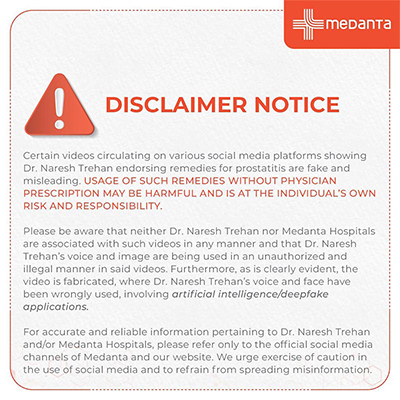Varicose Veins in Seniors: Causes, Age-Related Risks, and How Interventional Radiology Offers Pain-Free Relief
TABLE OF CONTENTS
- What Are Varicose Veins?
- Why Do Varicose Veins Worsen With Age?
- Symptoms That Steal Senior Comfort
- What Is Interventional Radiology?
- Pain-Free Healing: How IR Treats Varicose Veins in seniors
- Why Geriatric Patients Prefer IR-Based Treatments
- The Silent Impact: Why Timely Intervention Matters
- Conclusion: Age Shouldn’t Mean Pain
As we age, our bodies whisper signs of wear and tear—sometimes in the form of nagging joint aches, blurry vision, or slowed metabolism. But one condition often overlooked, yet significantly affecting the elderly, is varicose veins—those visibly twisted, bulging veins that seem more cosmetic than concerning. In reality, they’re not just a vanity issue. For many senior citizens, varicose veins are a source of constant pain, fatigue, and even limited mobility.
But here’s the good news: thanks to interventional radiology (IR), modern medicine has taken a leap from surgical scissors to image-guided, pain-free precision. Let’s unravel how varicose veins are affecting our elderly and how IR is rewriting their treatment story—one comfortable step at a time.
What Are Varicose Veins?
Varicose veins are enlarged, swollen, and twisted veins, usually blue or dark purple. They occur when faulty valves in the veins allow blood to pool rather than flow back to the heart. The most common site? The legs—because standing and walking increases pressure in the lower body veins.
Why Do Varicose Veins Worsen With Age?
Age is not kind to our circulatory system. Here's why older adults are more prone to varicose veins:
Weakened vein walls and valves: With time, veins lose elasticity, and valves become less efficient.
Slower blood circulation: Aging slows down overall body functions, including blood flow.
Muscle tone decline: Leg muscles help pump blood upward; muscle loss in the elderly means reduced support for veins.
Long-standing history of inactivity: Retirement often leads to a sedentary lifestyle, which worsens vein health.
Symptoms That Steal Senior Comfort
For geriatric patients, varicose veins are more than a cosmetic flaw. Common symptoms include:
Heaviness or aching in the legs
Throbbing, burning, or cramping
Swelling, especially after long hours of sitting or standing
Skin discoloration or ulcers around the ankle area
Restless legs and disturbed sleep due to constant leg discomfort
If left untreated, varicose veins can lead to serious complications like venous ulcers, bleeding, thrombophlebitis, or even deep vein thrombosis (DVT).
What Is Interventional Radiology?
Interventional Radiology is a medical specialty that uses advanced imaging techniques (like ultrasound, X-rays, CT scans) to guide minimally invasive procedures. Instead of open surgery, IR procedures are done through tiny incisions—often the size of a pinhole.
In the treatment of varicose veins, IR offers pain-free, outpatient-based solutions that don’t require general anaesthesia or hospital stays.
Pain-Free Healing: How IR Treats Varicose Veins in seniors
Here are the most common IR treatments for varicose veins:
Endovenous Laser Ablation (EVLA)
A small laser fiber is inserted into the affected vein using ultrasound guidance. The laser heat seals the vein shut, redirecting blood to healthier veins.
No surgery, no stitches
Local anesthesia only
Walk-in, walk-out procedure
Minimal downtime
Radiofrequency Ablation (RFA)
Similar to EVLA, RFA uses radiofrequency energy to heat and close the vein.
Less pain and bruising
Proven success in elderly patients
Rapid return to normal activity
3. Ultrasound-Guided Foam Sclerotherapy
A medical foam is injected into the vein, causing it to collapse and get absorbed by the body over time.
Ideal for smaller varicose veins
No surgical risk
Painless and quick
4. Phlebectomy
For visible bulging veins, a phlebectomy removes them through tiny skin punctures. Often combined with EVLA or RFA.
Minimally invasive
Aesthetic and functional benefit
Why Geriatric Patients Prefer IR-Based Treatments
Pain-Free or Minimal Pain
Seniors often fear surgery due to pain and anaesthesia risks. IR procedures are nearly painless, using local anaesthesia and gentle techniques.Outpatient Procedures
No hospital admission is needed—many patients walk out within a few hours.Faster Recovery
Most elderly patients resume light activities the next day. This means no prolonged bed rest, which is crucial for seniors to prevent stiffness and complications like blood clots.No General Anaesthesia
Avoiding general anaesthesia is a big advantage for older patients with heart or lung conditions.Cosmetic and Functional Benefits
apart from symptom relief, seniors experience improved mobility, better sleep, and boosted confidence when the unsightly veins disappear.
The Silent Impact: Why Timely Intervention Matters
In seniors, untreated varicose veins can result in:
Chronic leg pain
Immobility and muscle wasting
Skin infections and ulcers
Depression due to loss of independence
By choosing early diagnosis and IR-based treatment, we can significantly improve quality of life, mobility, and emotional well-being in elderly patients.
Conclusion: Age Shouldn’t Mean Pain
Varicose veins don’t have to be a lifelong burden. Especially not today—when Interventional Radiology offers safe, painless, and highly effective solutions. For our seniors, who’ve walked long miles through life, it’s time we offer them relief that doesn’t hurt, solutions that don’t scare, and treatments that truly heal.
So if you or a loved one is struggling with varicose veins, don’t wait. Consult an Interventional Radiologist and walk the pain-free path to better health.


